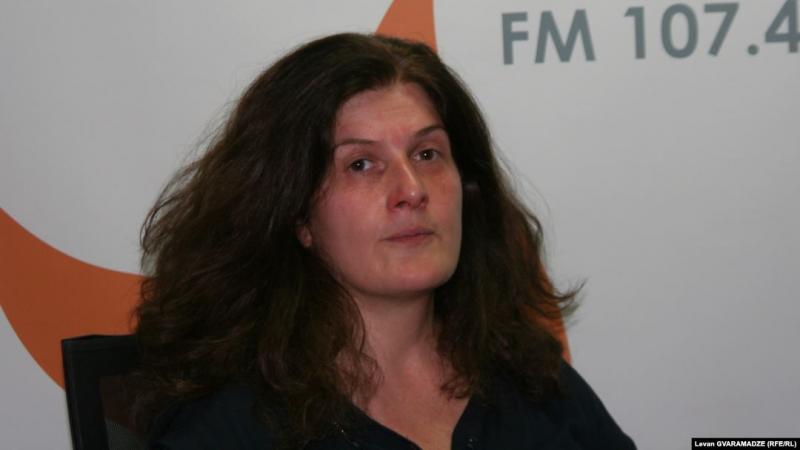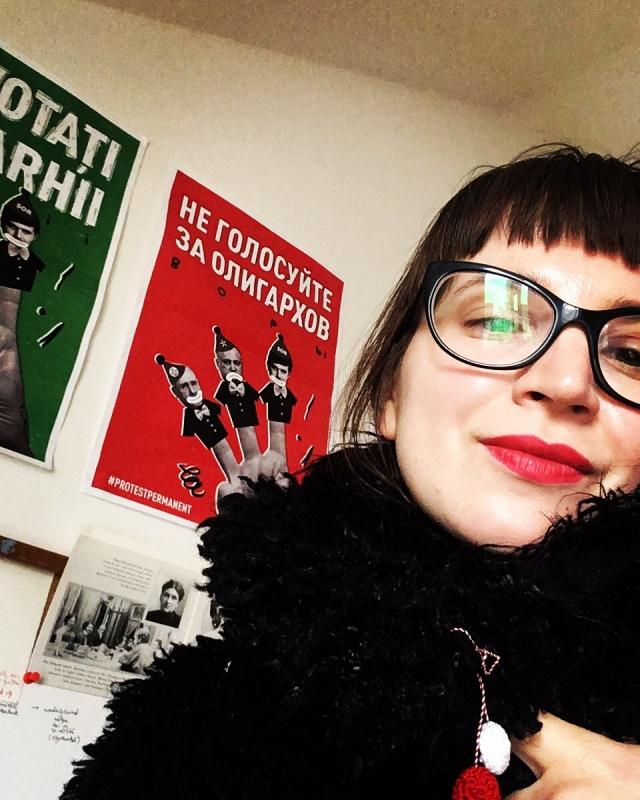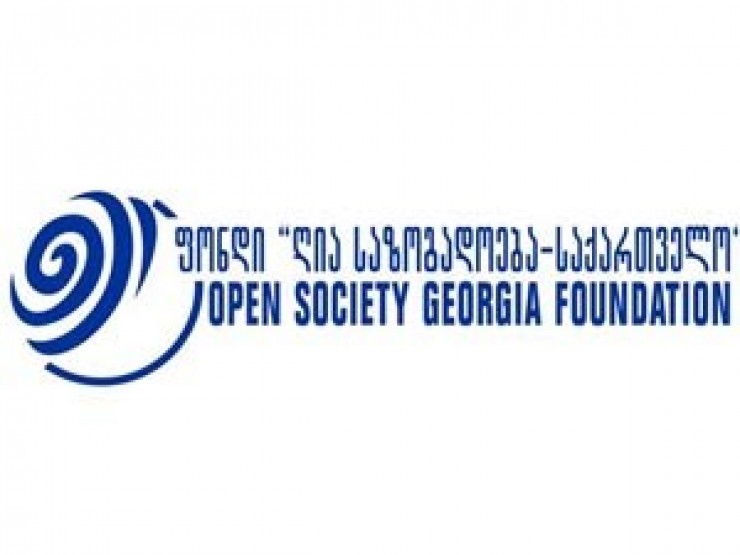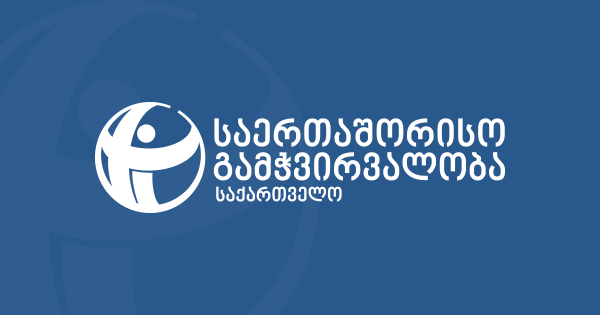- PEN Georgia - for writers` rights
Writers against hate speech

WHEN WORDS TORTURE AND KILL

copyright of the photo (c) Taras Paščanka
Thank to Annie Rutherford for the help with the English version of the text
I have been living in the world of words all my life, as a poet and as a linguist. Words are very important to me – maybe sometimes too important. As any profession, mine distorts a bit my world view. Some people say I am too sensitive towards words and they are right. Words mean to me as much as actions do, in fact, some words are actions themselves, if to remember performative verbs the uttering of which produces actions (e.g., I promise, I confess, I declare, I swear, etc.). It is not an accident that I mentioned performative verbs here, as I would like to start my essay with rather a bold statement that Hate Speech as a phenomenon is performative in its nature. What I mean is that hate speech is a type of behavior that causes damage to another person and thus the use of it has real effects which results in fear, stress, traumas, emotional and even physical pain.
It may seem that hate speech is a new phenomenon though it has existed for a long time, I suppose as long as people learnt to speak. If to look back into history, we will see that we inherited a number of examples of hate speech from our ancestors. Various proverbs and saying, curses and spells that humiliate and mock at different groups are not rare in any language. In one of my academic papers I compared Belarusian and English imprecatives. Under this term I understand verbal and cognitive practices of badevil wishes and curses when a speaker wishes something bad to happen to a listener, e.g. May the divil take your last shilling. Bad luck to you! Go to hell! I must say there is a big massive of such expressions and earlier, people actively used them to protect themselves from enemies or to bring bad luck to somebody they did not like.
Today the sphere where hate speech finds its way most is mass media and social media, but we can face it in other fields of our life as well: work or study place, hospitals, shops, public transports, etc.
The rhetoric of the hate speech is built on the dichotomy “we” and “they”. Such juxtaposition defines others as dangerous and hostile, because they look differently, eat different food, have different customs, sing different songs and so on. Discrimination is “training in not to identifying or empathizing with someone because they different in some way, believing the differences mean everything, and common humanity nothing.”[1] That is why submission, pressure, domination and violence – are typical characteristics of the hate speech, the aim of which is to stigmatize the groups of people who are minorities or have less power or rights in the society and who often cannot protect themselves.
The issue of hate speech is gaining attention nowadays, e.g. the Council of Europe in partnership with the Croatian Agency for Electronic Media of Europe held the International Conference – Addressing hate speech in the media: the role of regulatory authorities and the judiciary in Zagreb (Croatia) in November 2018. Between 2012 and 2017, the Council of Europe Youth Department organized European and regional training courses, seminars and conferences as part of the No Hate Speech Movement youth campaign.
As for the Belarusian situation, I can say that a lot has been done to draw public attention to the issue of the hate speech. In particular, Human Rights Initiative JOURNALISTS FOR TOLERANCE[2] monitors hate speech in Belarusian Mass Media and presents their results in semi-annual reports about the use of hate speech in relation to LGBTQ[3]. On their web-page one can find the special service to check a text for the markers of hate speech (https://check.j4t.by). Also there are several brochures dedicated to the topic of hate speech, such as: Gender Aspects of Hate Speech in Belarusian Media[4], etc.
Nevertheless hate speech is a part of our everyday life, because, unfortunately, stereotypes and discriminating ideas are strong among population. Very often in criminal news you can hear about “bad and irresponsible mothers” (fathers are not mentioned) or “cunning Gipsy”. All this leads to the stigmatization of certain groups and their demonization. Language is a very powerful tool, which creates reality. It is very naïve to underestimate its influence on human minds. Governments and states have known about it for ages, even if they do not talk about it explicitly. Language policy and state regulation of linguistic issues is a common thing in the agenda of the authorities. Every regime or dictatorship employs certain vocabulary to justify their actions and to deride the opposition. Linguistic propaganda corrupts people’s minds and sticks offensive labels to opponents and potential “enemies”.
On the one hand the awareness about a hate speech issue gives hope for a better and more conscious civil society where rights of each and every are guaranteed and protected, on the other hand, there are worries that some can take the advantage of the issue of hate speech and polarize things bringing them to extremes and thus creating a trap for the human rights advocators.
What to do then with hate speech? Some researchers think that to ban and to consider this phenomenon pathological can lead to a practice of prohibition and legal regulation that infantilizes the user, meaning that the person does not have to think herself/himself to understand what expressions she/he can use and which ones could be offensive and dangerous for others. I must say such an approach has its logic and is close to the idea of bringing up an individual who is able to distinguish what is good and what is bad on his/her own, which can result in the society where there will be no need in restrictions and bans.
For me personally, the trickiest case with hate speech is surely the language of literature. Sometimes writers who use derogatory expressions to describe any group (women, foreigners, emigrants) – can justify it saying that it is necessary to picture a character. Sometimes it is hard to object. Though in my practice of editing texts of novice writers, I can say there are cases when they use “mild” hate speech without even noticing it, reproducing the stereotypes. Then I point it out and make them think if they really need that sexist or racist expression in their texts.
A lot depends on the fact how the person understands freedom: for some people freedom is to abuse children and beat up his/her partner – because he/she considers it to be effective means of education or upbringing. Words and verbal behavior are very often not considered by people as something serious. I remember some men who used derogative terms in my address usually justified it by the fact that at that moment they felt “very emotional” and that I overreacted and did not have a right to be offended.
It is important to know that if somebody abuses you verbally there is no way you overreact, verbal violence is also violence. The other important thing is to make such cases visible, because if to let an aggressor go unpunished, he/she will learn that it is an appropriate behavior and that “it is their freedom” to abuse you.
As a poet and writer myself I re-work this traumatic experience in my texts. Sometimes irony is the best key to talk about it. A good example of what an artist can do is the work by Marina Naprushkina, a Belarusian artist who lives in Berlin, presented at the exhibition Feminist Art-Critique in Minsk, 2014 (see the picture below). The work is a template with words, which men usually address women (ranging from darling and sweetheart to fucking beach and slut), a vivid example how fast “love” can turn into “hate”.
So far the strongest antidote to discrimination and hate speech is empathy – a narrative that helps us see ourselves in the other. Literature, poetry, is one of the means to develop empathy and learn to see humans around.
Detailed_picture
Marina Naprushkina, “Untitled”, 2014
[1] p. 36, R. Solnit (2017) The Mother of All Questions.
[2] www.j4t.by
[3] https://j4t.by/category/issledovaniya/
[4] file:///C:/Users/user/Downloads/gendarnyya_aspekty_movy_varozhasci_u_belaruskih_smi.pdf










